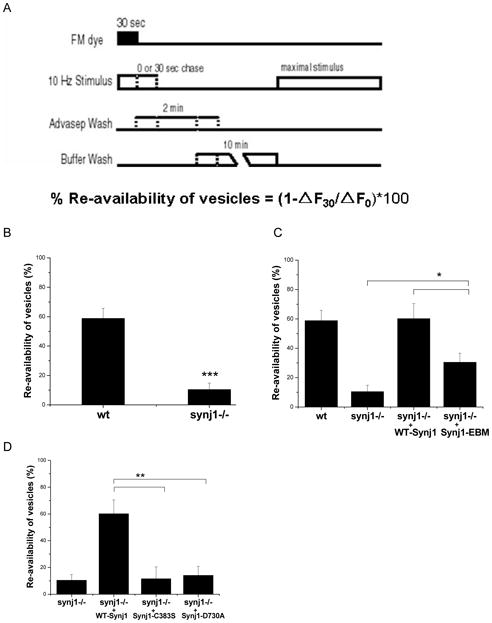Figure 8. The re-availability of vesicles following endocytosis is controlled by both phosphatase activities of Synj1, and partially determined by the Synj1-endo interaction.

(A) Protocol to measure re-availability of vesicles (Ryan and Smith, 1995). Neurons were stimulated for 30 sec at 10 Hz in the presence of FM dye, which was rapidly removed at the end of the stimulus by a 2 min wash with 1 mM Advasep-7, a dye chelator. Cells were then either subject to another 30 sec stimulus at 10 Hz, or left unstimulated. After a 10 min wash, the cells were maximally stimulated to release loaded dye, and the change in fluorescence intensity was quantified. The amount of dye retained after a 30 sec chase stimulus relative to dye retained in the absence of a chase stimulus was used to determine the percent re-availability of vesicles.
(B) The re-availability of vesicles was reduced in synj1−/− neurons as compared to wt neurons. ***P<0.001, n=7 wt and n=5 synj1−/−. Error bars are SEM.
(C) The re-availability of vesicles is fully restored by the expression of WT-Synj1, and partially restored by the expression of Synj1-EBM. *P<0.03, n=4 WT-Synj1 and n=6 Synj1-EBM. Error bars are SEM.
(D) The re-availability of vesicles following endocytosis is not restored by expression of phosphatase-deficient mutants of Synj1. **P<0.01 n=5 Synj1-C383S and n=6 Synj1-D730A. Error bars are SEM.
